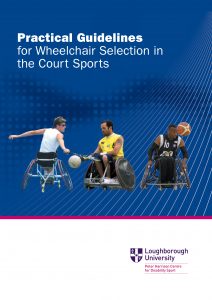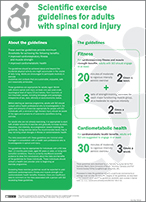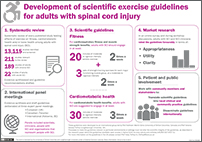In 2018 international scientific guidelines were developed to inform people with spinal cord injury (SCI) how much exercise is necessary for important fitness and health benefits. This page contains information about the guidelines and resources to support their implementation in the United Kingdom. For information or resources for other countries please visit the European SCI guidelines webpage.
An international group of 29 researchers, clinicians, community organisations and people with spinal cord injury (SCI) have developed scientific guidelines to inform people with SCI how much exercise is necessary for important fitness and health benefits.
This process was led by Professor Kathleen Martin Ginis (University of British Columbia, Canada) and Professor Vicky Tolfrey (Loughborough University, UK).
The UK part of the process was led by the Peter Harrison Centre for Disability Sport at Loughborough University. Also involved in the UK were:
- Andy Barrow, Paralympian and Inspirational Speaker
- Peter Carruthers, Bromakin Wheelchairs, Loughborough
- Christof A. Leicht, Loughborough University
- Jan W. van der Scheer, Loughborough University
- Brett Smith, University of Birmingham
- Vicky Tolfrey, Peter Harrison Centre for Disability Sport, Loughborough University
- Dot Tussler, National Spinal Injuries Centre, Stoke Mandeville Hospital, MASCIP Chair
The guidelines
Professor Vicky Tolfrey
Director, Peter Harrison Centre for Disability Sport, Loughborough University
Professor Vicky Tolfrey outlines the scientific exercise guidelines for people with spinal cord injury.
Further reading
Evidence-based scientific exercise guidelines for adults with spinal cord injury: an update and a new guideline (2017). Kathleen A. Martin Ginis, Jan W. van der Scheer, Victoria L. Goosey-Tolfrey. Spinal Cord. Effects of exercise on fitness and health of adults with spinal cord injury: A systematic review. van der Scheer JW, Martin Ginis KA, Ditor DS, Goosey-Tolfrey VL, Hicks AL, West CR, Wolfe DL. Goosey-Tolfrey VL, van der Scheer JW, Clements KC, Lexell J, Martin Ginis KA. The BASES Expert Statement on the Process and Outcomes of Developing Exercise Guidelines for Adults with Spinal Cord Injury (2018). The Sport and Exercise Scientist. Issue 56, Summer 2018. Infographic: Development of scientific exercise guidelines for adults with spinal cord injury. Goosey-Tolfrey VL, van der Scheer JW, Clements KC, Lexell J and Martin Ginis KA. British Journal of Sports Medicine (2018).Local contacts
If you have any questions or would like to discuss disseminating the guidelines in your area please contact:
Professor Vicky Tolfrey
Professor of Applied Disability Sport
Director of the Peter Harrison Centre for Disability Sport
Dr Jan van der Scheer
Senior Research Associate

Vicky completed her PhD in 1999 and went on to work with the Great Britain Men’s wheelchair basketball team before embarking on an academic career, moving to Loughborough University in 2007. She led the applied sport science project for the Great Britain Wheelchair Rugby Association over-seeing the delivery of a programme of applied support leading to Rio 2016 and also worked with the GB paratriathlon squad. Vicky is now still working with these two sports leading into the Tokyo 2020 Cycle.
Email: V.L.Tolfrey@lboro.ac.uk

Jan completed his BSc and MSc in Human Movement Sciences at VU University Amsterdam. He then obtained his PhD in medical/rehabilitation sciences from the University of Groningen, the Netherlands. Jan’s work focuses on developing guidelines for people with disabilities and their health care providers to benefit from improved fitness, health and wellbeing. As well as working on the dissemination of the international, evidence-based exercise guidelines for people with spinal cord injury Jan has also started working on clinical practice guidelines for functional electrical stimulated cycling for people with SCI and a project to develop recommendations for screening body composition of people with spinal cord injury.
Email: J.Scheer@lboro.ac.uk
Who will be using the guidelines?
Adults with spinal cord injury
For my physical and mental wellbeing I just enjoy doing exercise, it makes me feel better. I need to be as fit and strong as I can be to maintain my independence.
Peter Carruthers
Paralympian and Founder of Bromakin Wheelchairs
Healthcare professionals
Physiotherapists are ideally placed to helping the dissemination of these guidelines because they interact on a daily basis with patients at the start of their journey after their spinal cord injury.
Dot Tussler
Physiotherapist, Stoke Mandeville Hospital

Exercise takes on even greater importance post-SCI because keeping yourself fit and healthy is far more intrinsically linked to your independence.
Andy Barrow
SCi end-user, Paralympian and Inspirational Speaker
Related resources
Public preference for physical activity guidelines
This report highlights the findings from a survey of 201 people with a spinal cord injury (distributed to members of the Spinal Injury Association, SIA). Participants were asked a series of questions about their knowledge of existing guidelines, their preferences for the format of guidelines and how they would wish them to be distributed. Participants were asked to score content items to determine the most useful information to be included.
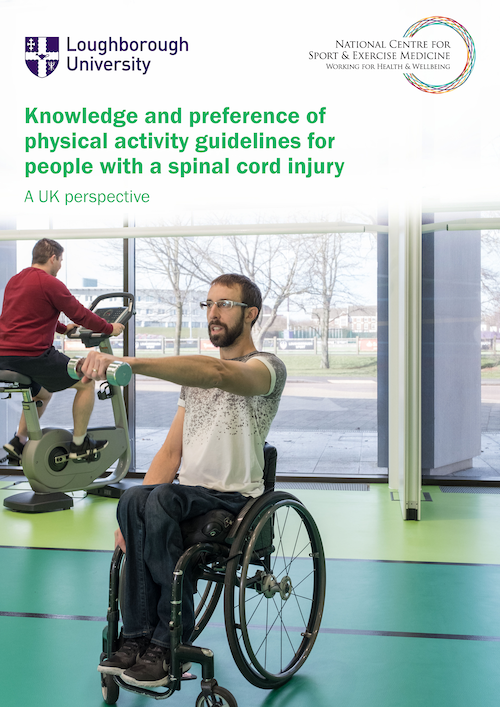
Physical activity for disabled adults: infographic
This UK Chief Medical Officer infographic is designed to make physical activity recommendations more accessible and to support people with a disability in getting more active. Published alongside it is a Public Health England evidence review that highlights a critical need for disabled adults to do more physical activity to improve their health. The infographic and evidence review were produced by a team led by Professor Brett Smith.
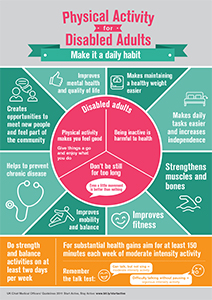
Fit for Life
Fit for Life is part of an educational toolkit has been developed by the Peter Harrison Centre for Disability Sport and the British Paralympic Association as part of the Fit and Healthy project. This guide is a great resource to help people with a spinal cord injury get fit for life. It starts with the basics and teaches how to lead a healthy, well-balanced and active lifestyle. The resource includes SCI specific topics, advice and adaptations. This guide is designed to help people achieve their own personal goals no matter what level they are currently at.
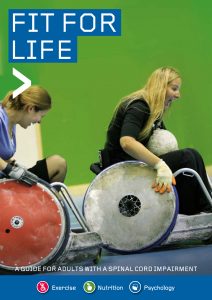
Practical Guidelines for Wheelchair Selection in the Court Sports
Wheelchair sport can be an important vehicle for achieving an active lifestyle. This booklet, developed by the Peter Harrison Centre, aims to document the effects that certain areas of wheelchair configuration can have on each aspect of mobility performance to assist users from a novice/rehabilitation setting through to elite athletes about the consequences of certain wheelchair selections. A less than optimal wheelchair configuration not only impairs performance, it can also place the user at an increased risk of injury.
